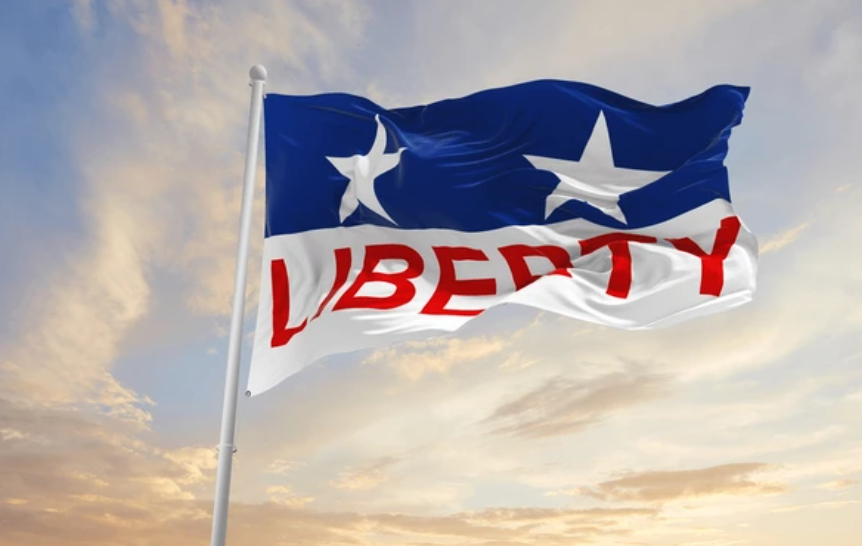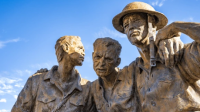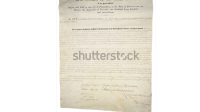Introduction: The Roots of Unrest in Canada’s Early Colonial History
The Rebellions of 1837 in Upper and Lower Canada were pivotal events in the early history of what would eventually become Canada. These uprisings were driven by widespread dissatisfaction with the colonial government, social inequalities, and the lack of political representation. The rebellions, though ultimately unsuccessful in achieving their immediate goals, played a significant role in shaping the future of Canadian governance and laid the groundwork for the movement toward responsible government and eventual confederation.
The Rebellions of 1837 were not isolated incidents but rather the culmination of years of growing tension between the colonial authorities and the populations of Upper Canada (modern-day Ontario) and Lower Canada (modern-day Quebec). These tensions were rooted in issues such as political corruption, economic inequality, and the domination of government by a small elite. The events of 1837 reflected the broader struggles for reform and democratic governance that were taking place in other parts of the British Empire at the time.
Read Also : Expulsion of the Acadians (1755): A Tragic Chapter in North American History
The Political and Social Context: Discontent in Upper and Lower Canada
To understand the Rebellions of 1837, it is essential to examine the political and social context of Upper and Lower Canada during the early 19th century. Both regions were British colonies, but they had distinct cultural, linguistic, and political landscapes that influenced the nature of the discontent and the subsequent uprisings.
Upper Canada: The Struggle Against the Family Compact
In Upper Canada, the political landscape was dominated by a small, powerful group known as the Family Compact. This elite group, composed of wealthy landowners, merchants, and clergy, held significant influence over the colonial government and used their power to maintain control over the colony’s political and economic life. The Family Compact’s dominance led to widespread resentment among the broader population, who felt excluded from the political process and marginalized by the economic policies of the ruling elite.
One of the leading figures in the movement for reform in Upper Canada was William Lyon Mackenzie, a fiery journalist, and politician who became the voice of the discontented. Mackenzie and his supporters, known as the Reformers, sought to challenge the power of the Family Compact and push for greater political representation and accountability in the government. They advocated for the establishment of responsible government, where the executive would be accountable to an elected assembly rather than the colonial governor and his appointed council.
The tensions in Upper Canada were exacerbated by economic difficulties, including a recession that hit the colony in the early 1830s. Many settlers faced financial hardship, and there was widespread discontent over issues such as land ownership, taxation, and the perceived favoritism shown to the Family Compact and their allies. These grievances provided fertile ground for the growth of the reform movement and the eventual outbreak of rebellion.
Lower Canada: Cultural and Political Tensions
In Lower Canada, the situation was further complicated by the region’s unique cultural and linguistic identity. The majority of the population in Lower Canada were French-speaking Canadiens, who had maintained their language, religion, and traditions despite being under British rule since the conquest of New France in 1763. However, the colonial government was dominated by a small English-speaking elite, leading to significant tensions between the two communities.
The Parti Patriote, led by Louis-Joseph Papineau, emerged as the primary voice of opposition to the colonial government in Lower Canada. The Patriotes sought greater political autonomy for the colony and the protection of French Canadian culture and rights. They demanded reforms such as the introduction of responsible government, the reduction of the powers of the appointed executive, and the expansion of the franchise to allow more people to vote.
The situation in Lower Canada was further inflamed by economic issues, including a series of poor harvests and the imposition of unpopular taxes. The Canadiens also resented the growing influence of English-speaking merchants and landowners, who were perceived as encroaching on their economic and cultural space. The combination of political, cultural, and economic grievances created a volatile atmosphere in Lower Canada, setting the stage for the rebellion.
The Outbreak of Rebellion: Sparks in Upper and Lower Canada
The Rebellions of 1837 were triggered by a series of events that pushed the tensions in Upper and Lower Canada to the breaking point. In both regions, the colonial government’s refusal to address the demands of the reformers led to a growing sense of frustration and anger, which ultimately erupted into open conflict.
The Rebellion in Upper Canada
In Upper Canada, the rebellion began in December 1837, following a series of confrontations between reformers and the government. William Lyon Mackenzie, frustrated by the lack of progress in achieving political reform through peaceful means, called for armed resistance against the colonial authorities. He rallied his supporters to take up arms and march on Toronto, the colonial capital.
The rebellion in Upper Canada was marked by a number of skirmishes between the rebels and government forces. The most significant of these was the Battle of Montgomery’s Tavern, where a poorly organized and equipped force of rebels was quickly defeated by government troops. The failure of the rebellion in Upper Canada was due in part to the lack of widespread support for armed insurrection, as well as the superior organization and firepower of the government forces.
Despite the defeat, the rebellion in Upper Canada had a lasting impact. It highlighted the deep-seated grievances of the population and the need for political reform. Mackenzie and many of his supporters fled to the United States, where they continued to agitate for change, but the rebellion itself was effectively crushed by early 1838.
The Rebellion in Lower Canada
In Lower Canada, the rebellion was more widespread and intense than in Upper Canada. The conflict began in November 1837, when the Parti Patriote, led by Louis-Joseph Papineau, organized a series of mass meetings and protests against the colonial government. The Patriotes called for the establishment of an independent republic of Lower Canada and urged the population to resist British rule.
The rebellion in Lower Canada quickly escalated into a full-scale conflict, with battles taking place across the region. The most notable of these were the Battles of Saint-Denis, Saint-Charles, and Saint-Eustache, where the Patriotes, armed with a mix of muskets, pikes, and farm tools, faced off against British troops and loyalist militias. Although the Patriotes achieved some initial successes, they were ultimately outnumbered and outgunned by the British forces.
The defeat of the Patriotes at the Battle of Saint-Eustache in December 1837 marked the turning point in the rebellion. The British troops, determined to crush the uprising, launched a brutal campaign of repression, burning villages, arresting suspected rebels, and executing leaders of the rebellion. Despite a brief resurgence of rebel activity in 1838, the rebellion in Lower Canada was effectively over by the end of that year.
The Aftermath: Repression and Reform
The immediate aftermath of the Rebellions of 1837 was characterized by a harsh crackdown on the rebels and their supporters, as well as a growing recognition that the colonial government needed to address the underlying causes of the unrest. The British authorities responded to the rebellions with a combination of repression and reform, aiming to restore order while also addressing some of the grievances that had fueled the uprisings.
Repression and Punishment
In the wake of the rebellions, the British authorities launched a campaign of repression against those who had participated in the uprisings. In both Upper and Lower Canada, hundreds of rebels were arrested and tried for treason, with many being sentenced to death or transportation to penal colonies in Australia. The British government was determined to send a clear message that any future attempts at rebellion would be met with severe consequences.
In Lower Canada, the repression was particularly brutal, with entire villages being burned to the ground and suspected rebels being summarily executed. The British military presence in the region was significantly increased, and martial law was imposed in an effort to prevent any further uprisings. The leaders of the rebellion, including Louis-Joseph Papineau, were forced into exile, and the Parti Patriote was effectively dismantled.
The Durham Report and the Road to Responsible Government
While the British authorities responded to the rebellions with repression, there was also a growing recognition that the colonial government needed to address the underlying causes of the unrest. In 1838, the British government appointed Lord Durham as Governor General of British North America and tasked him with investigating the causes of the rebellions and recommending solutions.
Lord Durham’s report, published in 1839, was a landmark document in the history of Canadian governance. In his report, Durham identified the lack of responsible government and the dominance of a small elite as the primary causes of the unrest in both Upper and Lower Canada. He recommended that the two colonies be united into a single province, with a responsible government that would be accountable to an elected assembly.
Durham’s report also addressed the cultural tensions in Lower Canada, arguing that the French Canadian population needed to be assimilated into the British colonial culture in order to prevent further conflict. This recommendation was controversial and was met with strong opposition from French Canadians, who feared that their language, religion, and culture would be eroded under British rule.
Despite the controversy, Durham’s report laid the groundwork for significant political reforms in Canada. In 1840, the Act of Union was passed, uniting Upper and Lower Canada into a single province known as the Province of Canada. The introduction of responsible government followed in the 1840s, marking a significant step toward greater political representation and accountability in the Canadian colonies.
The Legacy of the Rebellions: Toward Confederation
The Rebellions of 1837, while ultimately unsuccessful in achieving their immediate goals, had a profound impact on the future of Canada. The uprisings exposed the deep-seated grievances and divisions within the Canadian colonies and highlighted the need for political reform and greater representation. The legacy of the rebellions can be seen in the subsequent developments that led to the establishment of responsible government and, eventually, the confederation of Canada.
The Path to Responsible Government
One of the most significant legacies of the Rebellions of 1837 was the introduction of responsible government in the Canadian colonies. The principle of responsible government, where the executive is accountable to an elected assembly rather than an appointed governor, was a key demand of the reformers in both Upper and Lower Canada. The rebellions demonstrated the dangers of ignoring these demands and the need for greater political representation and accountability.
The introduction of responsible government in the 1840s marked a significant shift in the governance of the Canadian colonies. It allowed for greater participation in the political process and ensured that the government was more responsive to the needs and concerns of the population. This shift laid the foundation for the development of a more democratic and representative system of government in Canada.
The Road to Confederation
The Rebellions of 1837 also played a role in the eventual confederation of Canada. The Act of Union, which united Upper and Lower Canada into a single province, was a direct response to the rebellions and was intended to address some of the grievances that had fueled the uprisings. However, the union of the two colonies was not without its challenges, as cultural and political tensions persisted between the English-speaking and French-speaking populations.
Over the next several decades, the Canadian colonies continued to evolve politically, with increasing calls for greater autonomy and self-government. The legacy of the rebellions, with their emphasis on responsible government and political reform, influenced the discussions and negotiations that eventually led to the Confederation of Canada in 1867.
The creation of the Dominion of Canada in 1867, through the confederation of Ontario, Quebec, New Brunswick, and Nova Scotia, marked the culmination of a long process of political development that had its roots in the struggles and demands of the 1837 rebellions. The establishment of a federal system of government allowed for greater regional autonomy while also creating a framework for national unity and governance.
Conclusion: The Rebellions of 1837 in Historical Perspective
The Rebellions of 1837 were a defining moment in the early history of Canada, reflecting the deep-seated grievances and aspirations of the population in both Upper and Lower Canada. While the rebellions were ultimately unsuccessful in achieving their immediate goals, they played a crucial role in shaping the future of Canadian governance and laying the groundwork for responsible government and confederation.
The legacy of the Rebellions of 1837 can be seen in the subsequent political developments that led to the creation of a more democratic and representative system of government in Canada. The uprisings highlighted the importance of addressing the needs and concerns of the population and the dangers of maintaining a system of governance that excluded large segments of society from the political process.
Today, the Rebellions of 1837 are remembered as a key chapter in the history of Canadian democracy, a moment when ordinary citizens took a stand against political corruption and inequality. The events of 1837 continue to resonate in the ongoing discussions about governance, representation, and the rights of individuals within the Canadian political system.
FAQ About the Rebellions of 1837
What were the Rebellions of 1837?
The Rebellions of 1837 were uprisings in Upper and Lower Canada, driven by widespread dissatisfaction with the colonial government, social inequalities, and the lack of political representation. These rebellions were led by reformers seeking to challenge the dominance of a small elite and push for responsible government.
What caused the Rebellions of 1837?
The Rebellions of 1837 were caused by a combination of political, economic, and social grievances. In Upper Canada, the dominance of the Family Compact and economic difficulties fueled the unrest, while in Lower Canada, cultural tensions and the lack of political autonomy were key factors. Both regions shared a desire for greater political representation and accountability.
Who were the key leaders of the Rebellions of 1837?
In Upper Canada, William Lyon Mackenzie was the leading figure in the rebellion, advocating for political reform and challenging the power of the Family Compact. In Lower Canada, Louis-Joseph Papineau led the Parti Patriote, calling for greater autonomy and the protection of French Canadian rights.
What were the outcomes of the Rebellions of 1837?
While the rebellions were ultimately unsuccessful, they had a lasting impact on Canadian governance. The uprisings exposed the need for political reform, leading to the introduction of responsible government in the 1840s and setting the stage for the eventual confederation of Canada in 1867.
How are the Rebellions of 1837 remembered today?
The Rebellions of 1837 are remembered as a key moment in the history of Canadian democracy. They are seen as a struggle for political reform and responsible government, with lasting implications for the development of Canada’s political system. The legacy of the rebellions continues to influence discussions about governance and representation in Canada.







Your articles are extremely helpful to me. Please provide more information! http://www.hairstylesvip.com